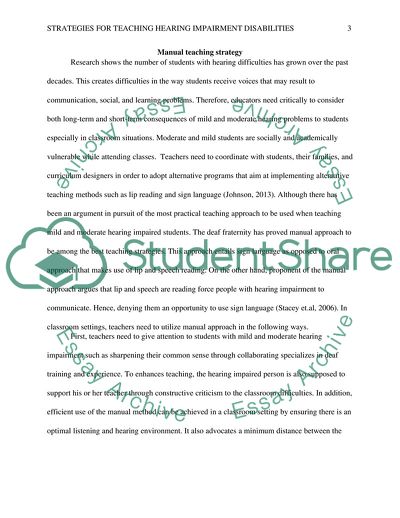Cite this document
(Strategies for Teaching Hearing Impairment Disabilities Essay Example | Topics and Well Written Essays - 1500 words, n.d.)
Strategies for Teaching Hearing Impairment Disabilities Essay Example | Topics and Well Written Essays - 1500 words. https://studentshare.org/education/1850296-methods-and-strategies-for-teaching-mild-moderate-hearing-impairment-disabilities-under-idea
Strategies for Teaching Hearing Impairment Disabilities Essay Example | Topics and Well Written Essays - 1500 words. https://studentshare.org/education/1850296-methods-and-strategies-for-teaching-mild-moderate-hearing-impairment-disabilities-under-idea
(Strategies for Teaching Hearing Impairment Disabilities Essay Example | Topics and Well Written Essays - 1500 Words)
Strategies for Teaching Hearing Impairment Disabilities Essay Example | Topics and Well Written Essays - 1500 Words. https://studentshare.org/education/1850296-methods-and-strategies-for-teaching-mild-moderate-hearing-impairment-disabilities-under-idea.
Strategies for Teaching Hearing Impairment Disabilities Essay Example | Topics and Well Written Essays - 1500 Words. https://studentshare.org/education/1850296-methods-and-strategies-for-teaching-mild-moderate-hearing-impairment-disabilities-under-idea.
“Strategies for Teaching Hearing Impairment Disabilities Essay Example | Topics and Well Written Essays - 1500 Words”. https://studentshare.org/education/1850296-methods-and-strategies-for-teaching-mild-moderate-hearing-impairment-disabilities-under-idea.


